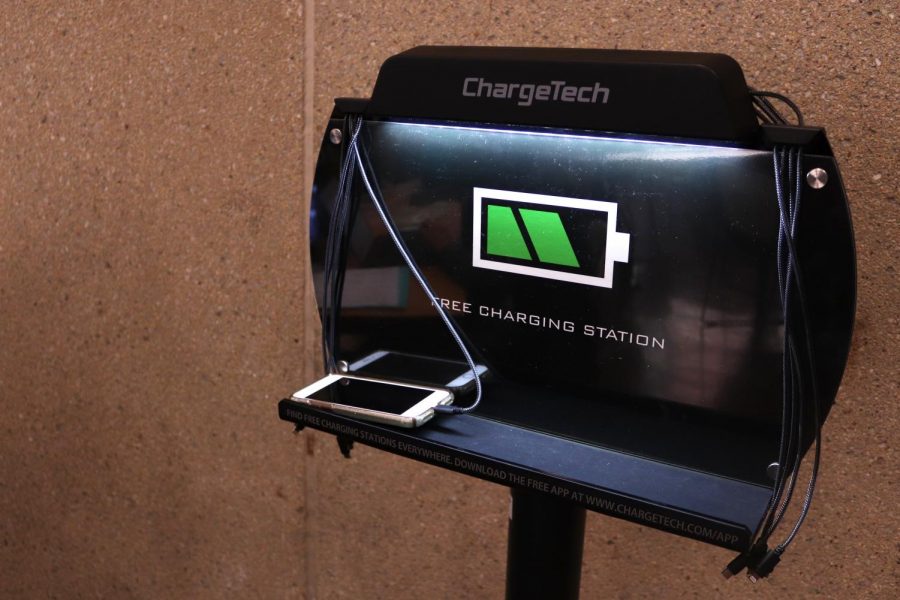Commons Get Charged
January 8, 2018
Everyone needs a phone charger from time to time. If your friend has forgotten theirs, then you might have to lend out your own. Fortunately this problem has been solved by the addition of charging stations in the commons. With the help of the Executive Board and Student Senate, students will now be able to charge their phones at school whenever necessary.
The idea of the charging stations was originally brought up last school year by a group of students who were participating in Architecture Club. However, it was not until this year that the concept was brought into the Student Senate for deliberation. After the Senate took a vote on the idea, both charging stations were installed in the commons to promote the use of that space as a more social location for students.
“There was some discussion of putting [the stations] in the library as well but we are really trying to promote the library as more of an educational space and the commons more as a place to do homework while also a place to visit with friends,” said Scott Jesperson, City High Assistant Principal. “Plus, having them in the commons allows us to have security cameras on the charging stations.”
Jesperson and the Executive Board, an organization of a few members of the student body tasked with creating a connection between students and the administration, worked with Student Senate to organize this addition. It was settled that one charging station would be purchased with parking lot money, funds that go directly back to the students, and the other would be funded from the Student Senate’s coffers.
City High librarians were the first to approach Jesperson with the idea of the $550 charging stations. Each includes eight charging cords for various models and brands of phones, and the stations provide a quick and safe way to charge a phone during a prep or lunch period. More charging stations may be added in the lunch room and library in future years in addition to the current ones.
There is some controversy on the matter that teachers and staff promote keeping phones put away and secured during the school day but are providing a place to keep phones accessible and of use throughout the day.
But Jesperson does not agree with these concerns. Rather, he is of the opinion that the charging stations show respect towards students and is a way to reward students for good behavior as long as they use it wisely.
“We try to look at what student needs are,” said Jesperson. “We want this to be a modern high school and we want it to be where students feel like we recognize their needs. [Charging stations aren’t] groundbreaking, but [they] can still help students a great deal.”





































